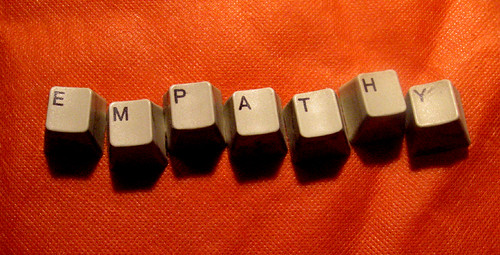This morning I had the opportunity of engaging with quite an interesting and energetic group of bright individuals as part of our institute's training of newly-hired teachers. The goal was to discuss the teaching of writing to our EFL learners, what it is that an effective pre-writing lesson should entail, as well as ways of responding to students' writings. It was a hands-on session, with some initial discussion and brainstorming of lesson stages with a specific writing prompt in mind, which was then followed by their response to and correction of an authentic writing sample. The idea was to familiarize teachers with the kind of response to writing that we believe to be in keeping with the principle that writing is a recurrent process, non-linear in its creative nature, and the very expression of one's voice.
Roll up your sleeves and let's get down to business
Teachers worked in smaller groups and were asked to respond to and provide corrective feedback to a first draft sample of a five-paragraph essay written by an upper-intermediate level learner. Along with the sample, they received a copy of our correction and proofreading symbols, as well as a scoring rubric by means of which they'd grade that first draft. They immediately set out to accomplish the task, industriously reading the piece, red pens in hand, and... Stop. Wait a minute. Do you feel an urge to begin crossing out and underlining spelling mistakes and wrong verb tense use? You do, don't you?
Step away from the red pen
Before you unleash your full corrective-feedback-giving potential, put on a different hat. Be a reader. Respond to your students' content and ideas as a real person. Familiarize them with that sense of having an audience. We use language to communicate, be it in spoken or written form. Let them know that you are truly listening to them. Try to find at least a couple of aspects in their writing that are worth a compliment. Relate to their ideas, share a little about your own experience by commenting that maybe you once felt the same way as they did facing a certain situation in your own life, and that you know how wonderful or how difficult it must have been for them to go through it, as well. Empathize. Connect. Engage.
Respect individual stylistic choices
It's always a challenge to provide corrective feedback without stifling the writer's voice. What I mean is, are you (over)correcting to the point of forcing the student to write as you would have if expressing a similar idea in written form? Of course there are instances of L1 interference that must be addressed, such as word order issues to name one, but we teachers walk a fine line between pointing our students in the right direction and simply imposing our own style on them. Keep an awareness of the fact that your students are experimenting with language (a foreign one, as a matter of fact), and that they are, knowingly or not, in their own quests to finding their voice. Cherish. Allow. Enable.
Sounding curious as opposed to judgemental
Instead of saying something like "this paragraph is too short. Please develop your ideas here." how about offering something more in the lines of "I wonder if you could tell me more about this experience/situation." or even "how did you feel?" and "what did you do next?" The point is that by asking a simple question, you may elicit just the response you want from a student, instead of making a direct comment that might come across as judgemental, in that it is an affirmation made by you, the teacher, who is supposedly the knowledge authority on all subjects language-wise. Don't point fingers. Ask more questions. Provoke. Entice. Foster.
This set of guidelines sprang up from this group's engagement and reflections during our training session, so that gives you a pretty good idea of how lucky we are to have gathered such a great collection of curious and avid learner-teachers. Thank you all, Casa newbies, for inspiring me to write this piece.
 |
| Welcome aboard, guys! |
Clarissa Bezerra








.JPG)
.JPG)
.JPG)



